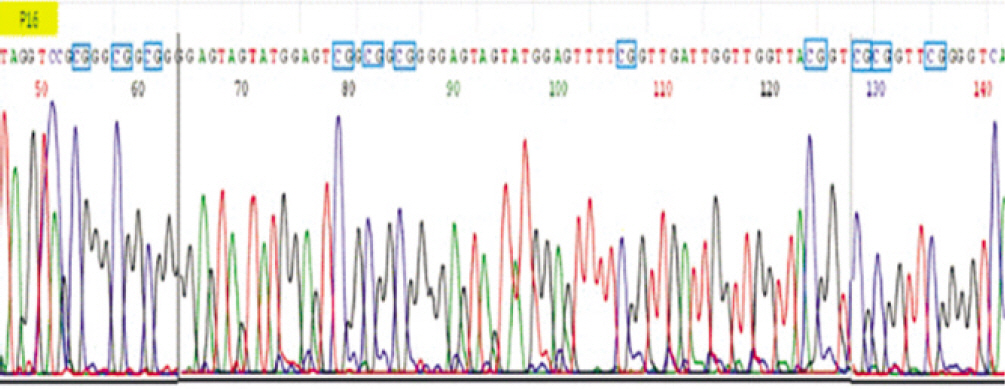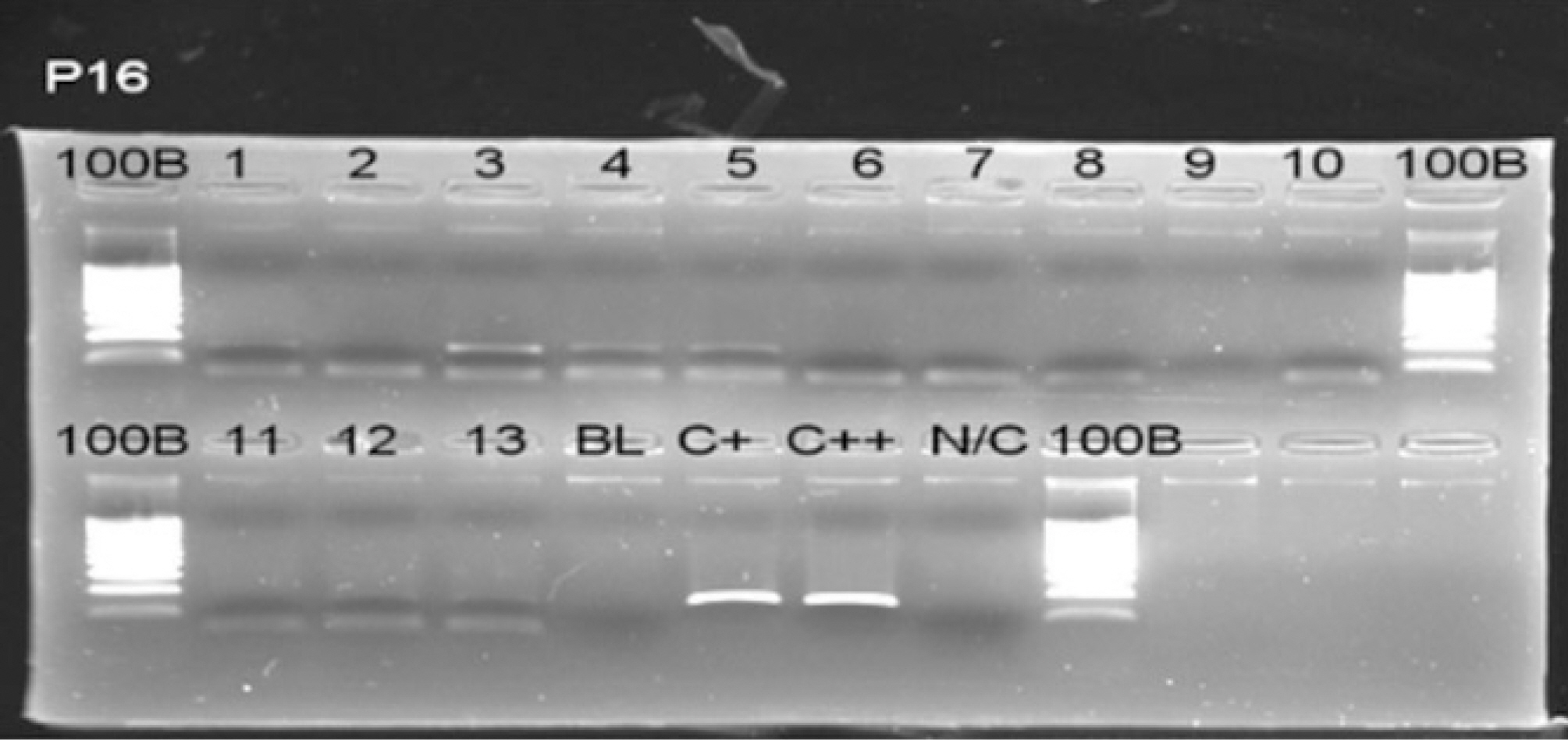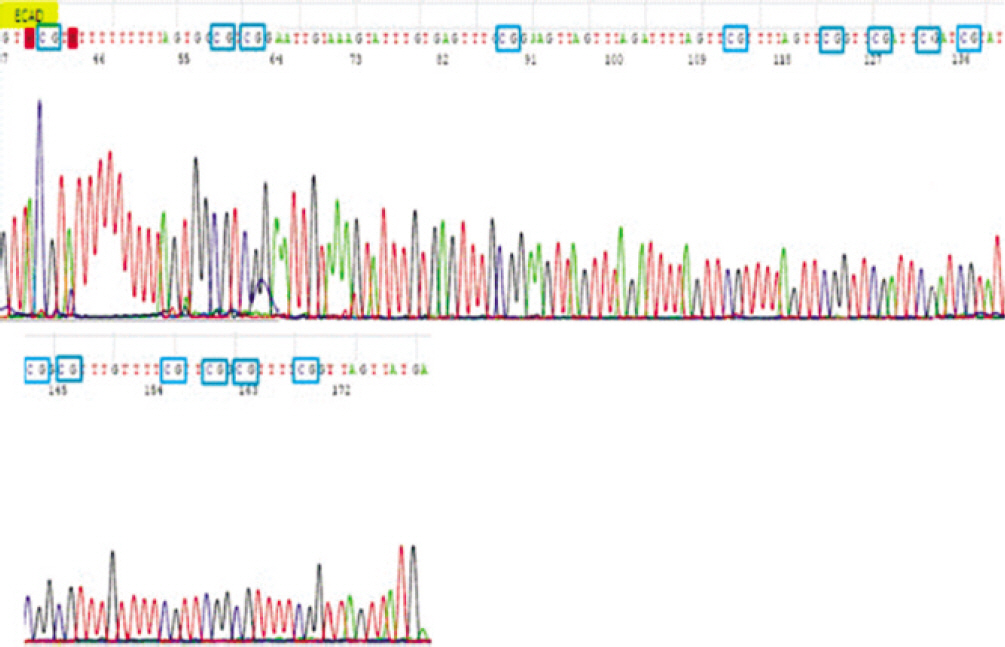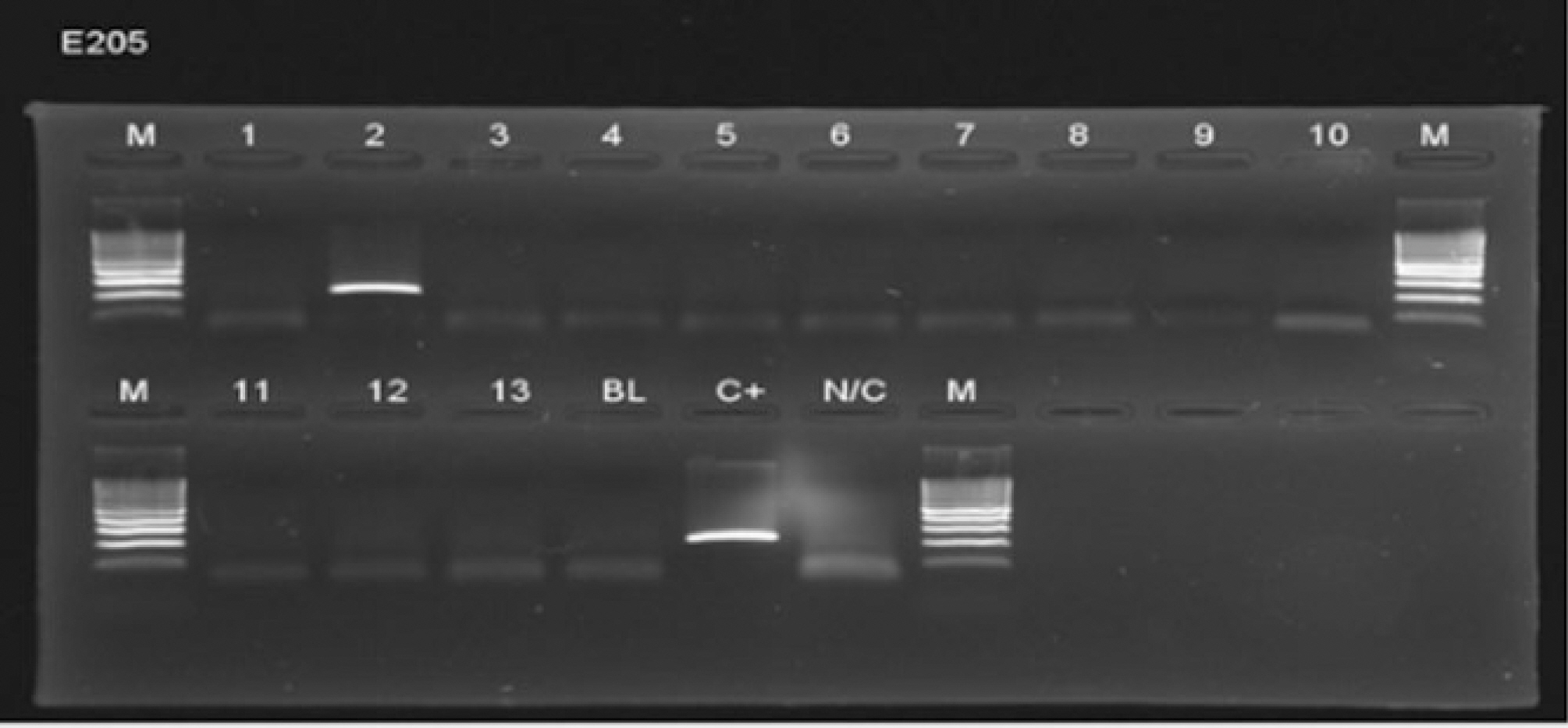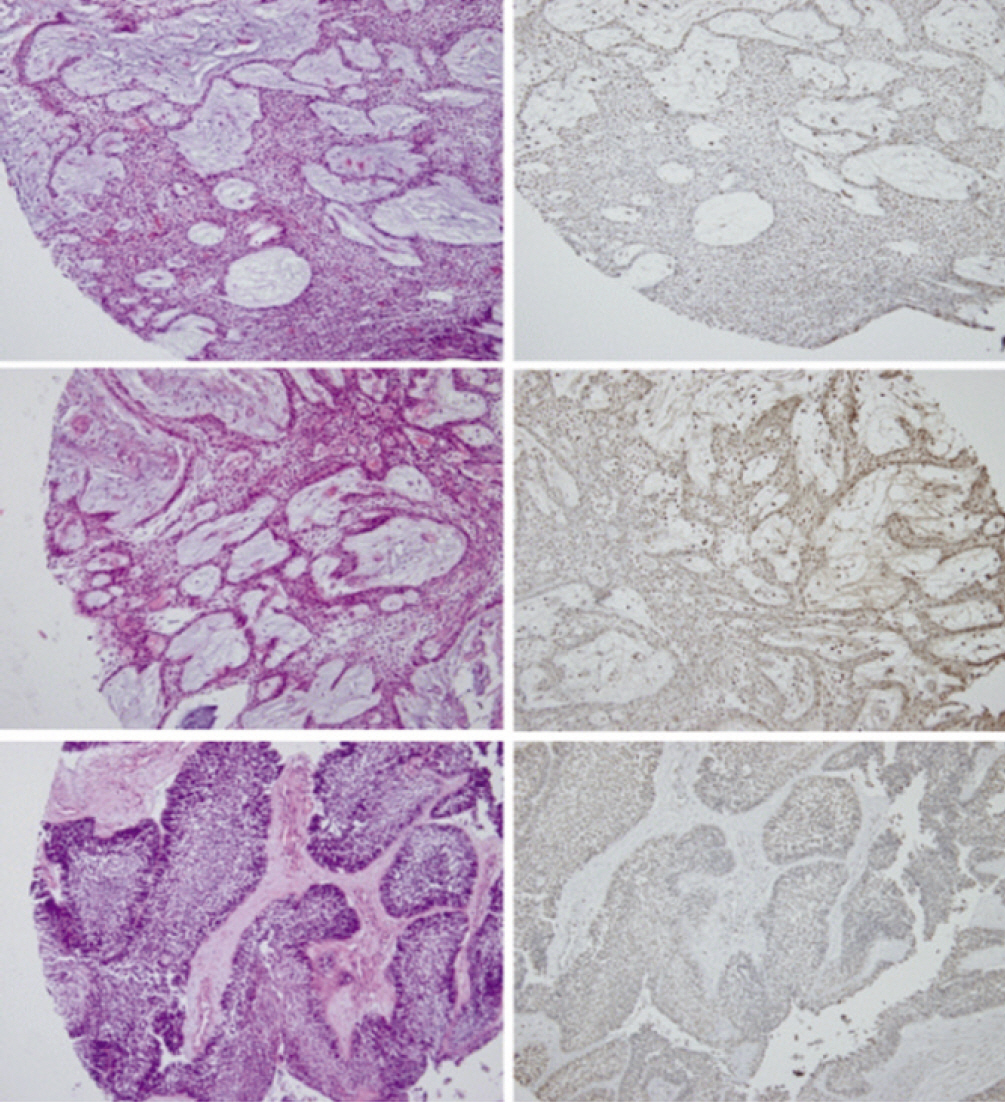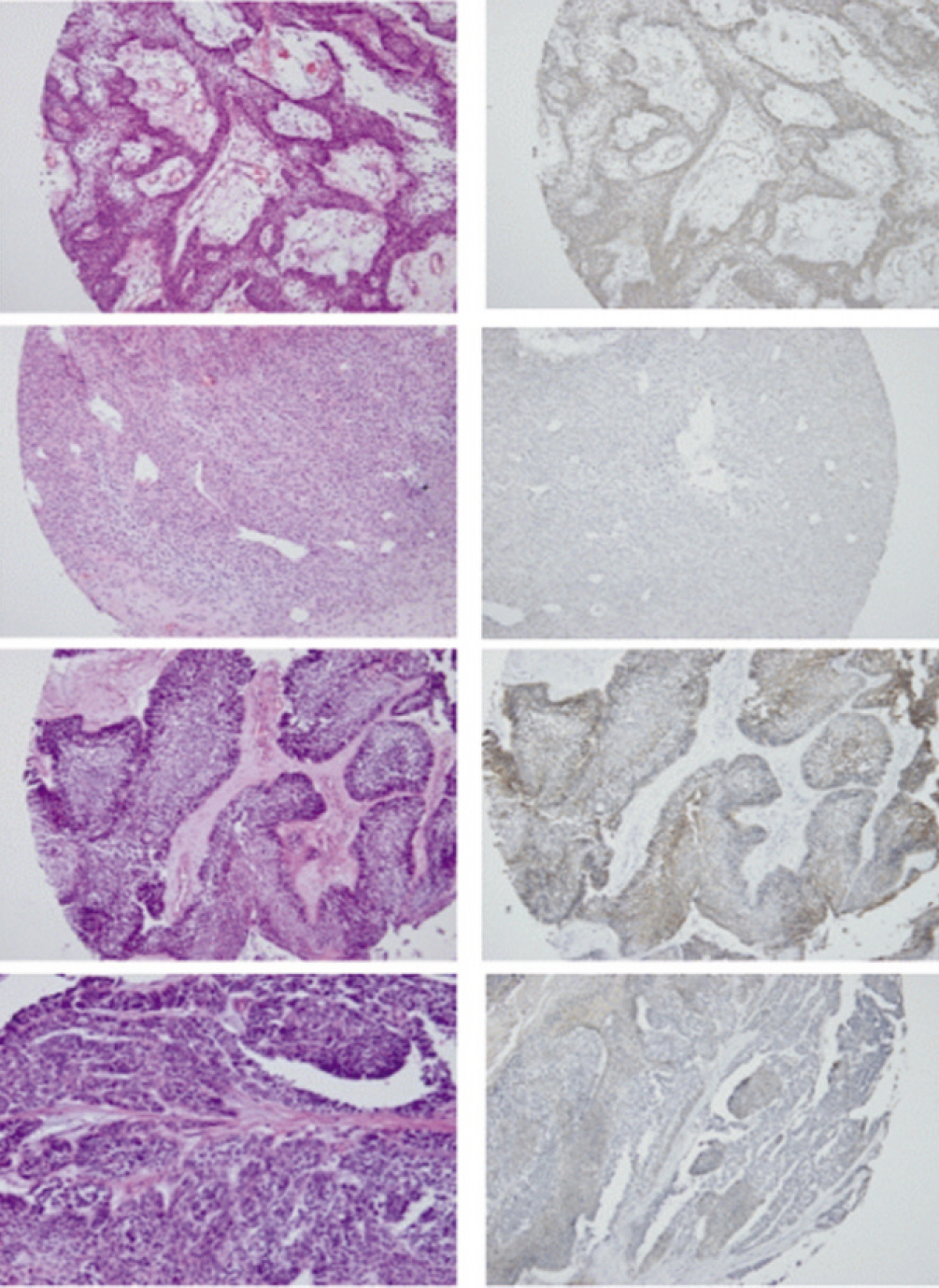J Korean Assoc Oral Maxillofac Surg.
2010 Dec;36(6):453-459.
Methylation of p16 and E-cadherin in ameloblastoma
- Affiliations
-
- 1Department of Oral and Maxillofacial Surgery, Pusan Paik Hospital, College of Medicine, Inje University, Busan, Korea. ds5nki@hanmail.net
- 2Department of Pathology, Pusan Paik Hospital, College of Medicine, Inje University, Busan, Korea.
Abstract
- INTRODUCTION
Ameloblastic carcinoma is a rare malignant lesion, and may arise from either carcinoma ex-ameloblastoma or de novo carcinoma. Aberrant promoter hypermethylation of the tumor-associated genes leading to their inactivation is a common event in many cancer types. The p16/CDKN2/INK4A gene and p16 5 protein are involved directly in regulating the cell cycles. Cadherins are cell adhesion molecules that modulate the epithelial phenotype and regulate tumor invasion. The aim of this study was to evaluate the roles of p16 and E-cadherin methylation and loss of p16 and E-cadherin expression in the malignant transformation of an ameloblastoma.
MATERIALS AND METHODS
Eight cases of ameloblastoma, including 4 benign ameloblastomas without recurrence, 2 benign ameloblastomas with recurrence and 2 carcinoma ex-ameloblastomas, were examined. The promoter hypermethylation profile of the p16 and E-cadherin genes was studied using methylation-specific polymerase chain reaction (MSP) and immunohistochemical staining for p16 and E-cadherin expression.
RESULTS
1) Aberrant CpG island methylation of the p16 gene was detected in 3 of the 4 benign ameloblastomas without recurrence and 1 of the 2 benign ameloblastomas with recurrence. 2) Aberrant CpG island methylation of the E-cadherin gene was found in 1 of the 4 benign ameloblastomas without recurrence. 3) A loss of p16 expression was noted in 1 of 4 benign ameloblastomas without recurrence and 1 of 2 carcinoma ex-ameloblastomas. 4) A loss of E-cadherin expression was noted in 2 of the 4 benign ameloblastomas without recurrence, 1 of the 2 benign ameloblastomas with recurrence and 2 of the 2 carcinoma ex-ameloblastomas. 5) A loss of p16 expression was observed in 1 of the 4 cases showing aberrant methylation of the p16 gene. 6) A loss of E-cadherin expression was observed in 3 benign ameloblastoma case showing aberrant methylation of the E-cadherin gene.
CONCLUSION
These results suggest that loss of E-cadherin expression related to the other genetic pathway (not methylation) might be an adjuvant indicator predicting the malignant transformation of an ameloblastoma. However, the number of samples in this study was too small and the relationship between the treatment methods and clinical course were not defined. Therefore, further study will be needed.
Keyword
MeSH Terms
Figure
Reference
-
1. Barnes L, Eveson JW, Reichart P, Sidransky D. World Health Organization classification of tumours: pathology and genetics of head and neck tumours. Lyon, France: International Agency for Research on Cancer Press. 2005.2. Baylin SB, Esteller M, Rountree MR, Bachman KE, Schuebel K, Herman JG. Aberrant patterns of DNA methylation, chromatin formation and gene expression in cancer. Hum Mol Genet. 2001; 10:687–92.
Article3. French SW, Dawson DW, Miner MD, Doerr JR, Malone CS, Wall R, et al. DNA methylation profiling: a new tool for evaluating hematologic malignancies. Clin Immunol. 2002; 103:217–30.
Article4. Ho A, Dowdy SF. Regulation of G(1) cell-cycle progression by oncogenes and tumor suppressor genes. Curr Opin Genet Dev. 2002; 12:47–52.
Article5. Rush LJ, Plass C. Alterations of DNA methylation in hematologic malignancies. Cancer Lett. 2002; 185:1–12.
Article6. Kresty LA, Mallery SR, Knobloch TJ, Song H, Lloyd M, Casto BC, et al. Alterations of p16(INK4a) and p14(ARF) in patients with severe oral epithelial dysplasia. Cancer Res. 2002; 62:5295–300.7. Viswanathan M, Tsuchida N, Shanmugam G. Promoter hypermethylation profile of tumor-associated genes p16, p15, hMLH1, MGMT and E-cadherin in oral squamous cell carcinoma. Int J Cancer. 2003; 105:41–6.
Article8. Abiko Y, Nagayasu H, Takeshima M, Yamazaki M, Nishimura M, Kusano K, et al. Ameloblastic carcinoma ex-ameloblastoma: report of a case-possible involvement of CpG island hypermethylation of the p16 gene in malignant transformation. Oral Surg Oral Med Oral Pathol Oral Radiol Endod. 2007; 103:72–6.9. Chen Q, Lipkina G, Song Q, Kramer RH. Promoter methylation regulates cadherin switching in squamous cell carcinoma. Biochem Biophys Res Commun. 2004; 315:850–6.
Article10. Pho SW, Kim YS, Park JY, Kim CH, Lee W, Park MK. The hypermethylation of E-cadherin gene in oral squamous cell carcinoma. J Korean Assoc Oral Maxillofac Surg. 2008; 34:135–40.11. Auerkari EI. Methylation of tumor suppressor genes p16(INK4a), p7(Kip1) and E-cadherin in carcinogenesis. Oral Oncol. 2006; 42:5–13.12. Sastre J, Muñoz M, Naval L, Adrados M. Ameloblastic carcinoma of the maxilla: report of a case. J Oral Maxillofac Surg. 2002; 60:102–4.
Article13. Verneuil A, Sapp P, Huang C, Abemayor E. Malignant ameloblastoma: classification, diagnostic and therapeutic challenges. Am J Otolaryngol. 2002; 23:44–8.
Article14. Thoma KH. Oral pathology: a histological, roentgenological, and clinical study of the diseases of the teeth, jaws, and mouth. 3rd ed.St. Louis: Mosby;1950.15. Pindborg JJ, Kramer I, Torloni H. Histological typing of odontogenic tumors, jaw cysts, and allied lesions. Geneva, Switzerland: World Health Organization. 1972.16. Slootweg PJ, Muller H. Malignant ameloblastoma or ameloblastic carcinoma. Oral Surg Oral Med Oral Pathol. 1984; 57:168–76.
Article17. Zhao Y, Zhang S, Fu B, Xiao C. Abnormalities of tumor suppressor genes P16 and P15 in primary maxillofacial squamous cell carcinomas. Cancer Genet Cytogenet. 1999; 112:26–33.
Article18. Nodit L, Barnes L, Childers E, Finkelstein S, Swalsky P, Hunt J. Allelic loss of tumor suppressor genes in ameloblastic tumors. Mod Pathol. 2004; 17:1062–7.
Article
- Full Text Links
- Actions
-
Cited
- CITED
-
- Close
- Share
- Similar articles
-
- Disappearance of Serum Methylated p16 Indicates Longer Survival in Patients with Gastric Cancer
- The Loss of p16(ink4)Expression is Strongly Associated with Hyperme thylation-Related Inactivation in Breast Carcinoma
- Promoter Methylation of p16 Gene in Cervical Cancer
- Methylation of P16 and hMLH1 in Gastric Carcinoma
- Relationship between Methylation Status of p16 Tumor Suppressor Gene and Clinicopathologic Behavior of Stomach Cancer

